Learn about the rich centuries-old history of Japanese sake, from an offering to the gods and religious rituals to the people’s drink!
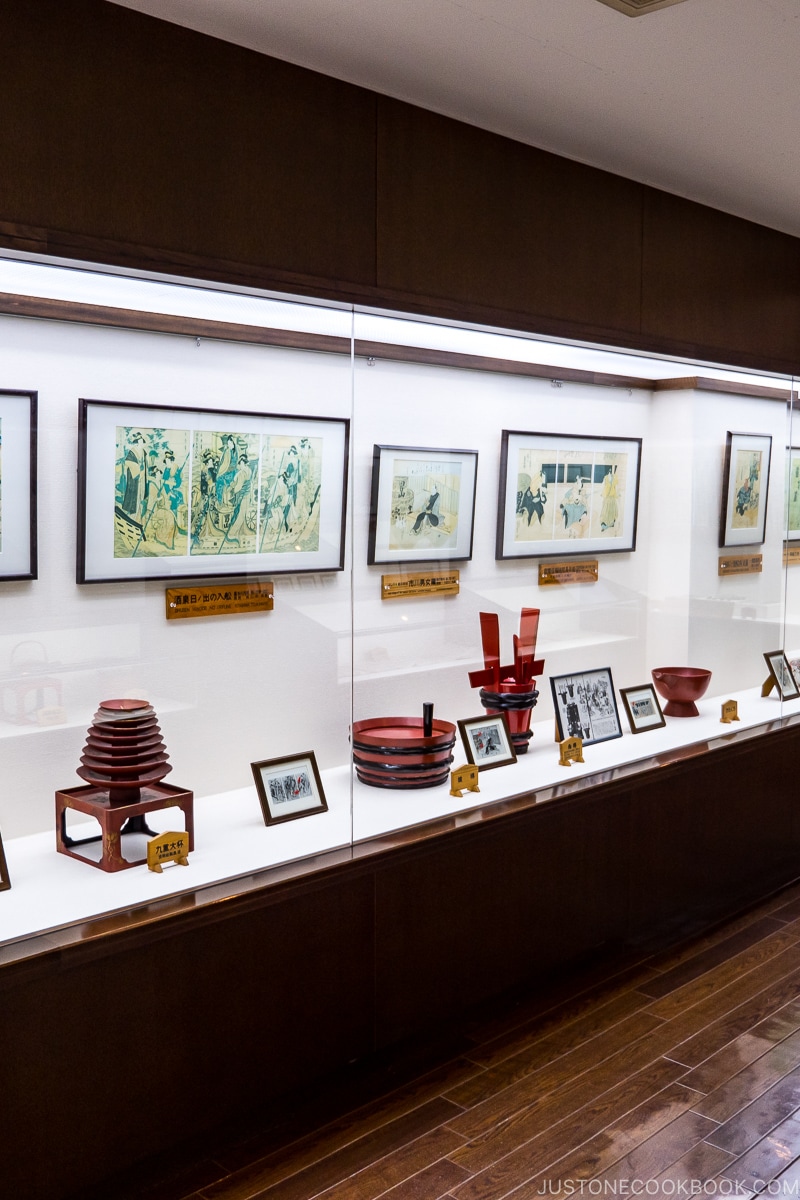
Without sake, there may be no Japanese civilization. Initially, sake was an offering to the gods and consumed within the Imperial court. It then underwent massive technological advancements and refinements over centuries. Its popularity seeped outside the nobility to the commoners to unite people with love for the drink.
So now that we know what sake is (part 1) and how to enjoy it (part 2), let’s look back at the impressive history of Japanese sake.
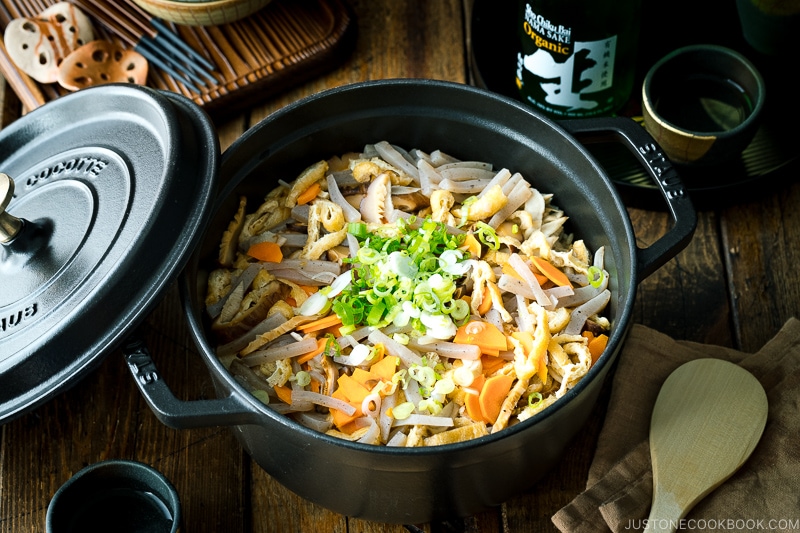
The History of Japanese Sake
We cannot talk about the history of Japanese sake without mentioning rice. Rice was brought from China to the southern island of Kyushu about 2,500 years ago. Its cultivation gradually spread across the country (more on the history of Japanese rice here).
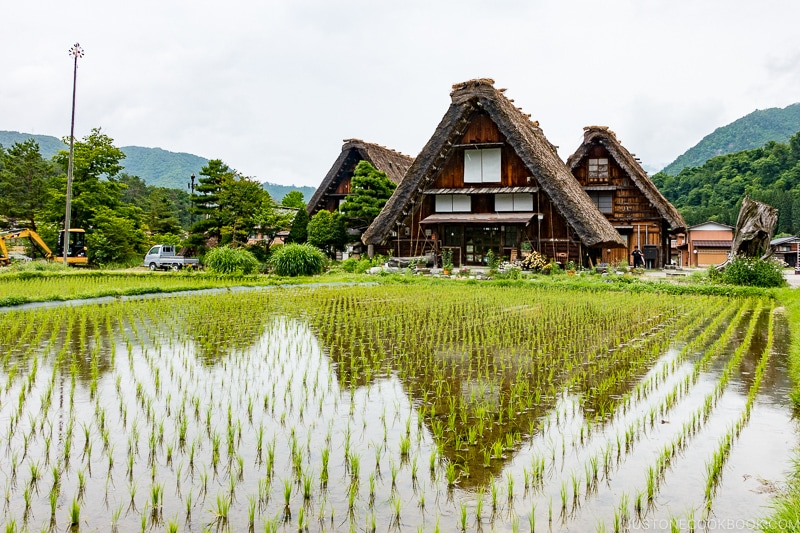
Murky Origin Story for Sake
The birth of sake predates recorded history, so there’s fuzzy evidence of its origins. Historians suggest several theories of its origins, which connect to when wet-rice cultivation became prevalent in Japan.
Several texts allude to an unspecified type of rice-based alcohol in Japan. The earliest references to alcohol in Japan were in the 1st-century Chinese text “Lunheng” (論衡) and 3rd century “Records of the Three Kingdoms” (三國志). They described the drinking and dancing culture of the Japanese people. The Nihon Shoki (日本書紀), the historical document, and the Kojiki (古事記), the classic mythology text, mentions gods imbibing the drink.
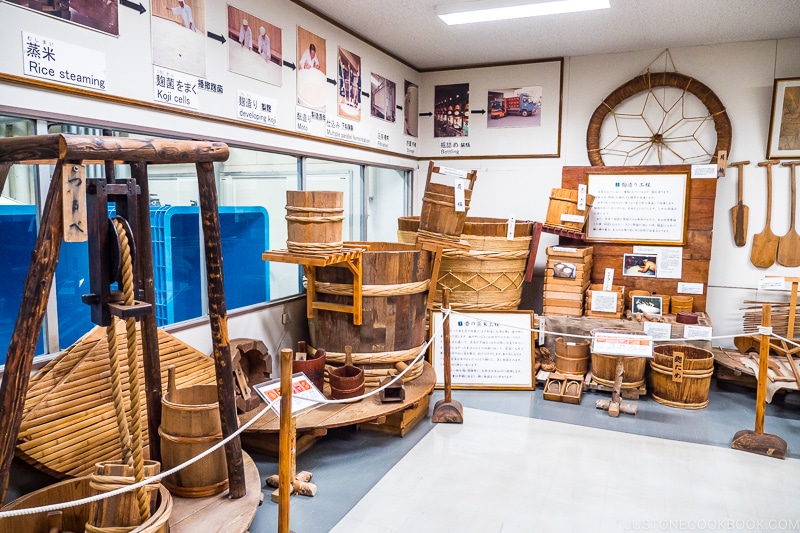
The most detailed record is in “Harima no kuni fudoki” (播磨国風土記, “The Topography of Harima Province”) written around 716. It mentions an incident where someone brewed sake from dried and boiled rice that had gotten wet and moldy. This sake was probably produced due to the naturally existing mold Aspergillus oryzae, which suggests the origins of sake.
Other Theories on the Origin of Sake
Another theory suggests that kuchikami zake (口嚼ノ酒) was the origin of sake. This type of alcohol, made by villagers chewing rice and spitting the contents into a communal vat, was also found in China around 500 BC. The saliva and natural yeast enzymes would convert the rich starch into an alcohol slurry. The technique was supposedly brought to Japan around the 8th century.
Sake for the Imperial Court
Sake brewing became a sophisticated art, but the Imperial court in Nara prefecture monopolized production and kept it within the courts. They established a government office called Sake no Tsukasa (造酒司・造酒寮) within the palace in 689. This brewing department produced and managed a stable supply of sake year-round. The department kept the sake for ceremonial usage and rites and restricted it to the nobility and religious leaders.
The sake consisted of steamed rice, rice koji, and water. It was then fermented for ten days to produce a thin, watery sake.
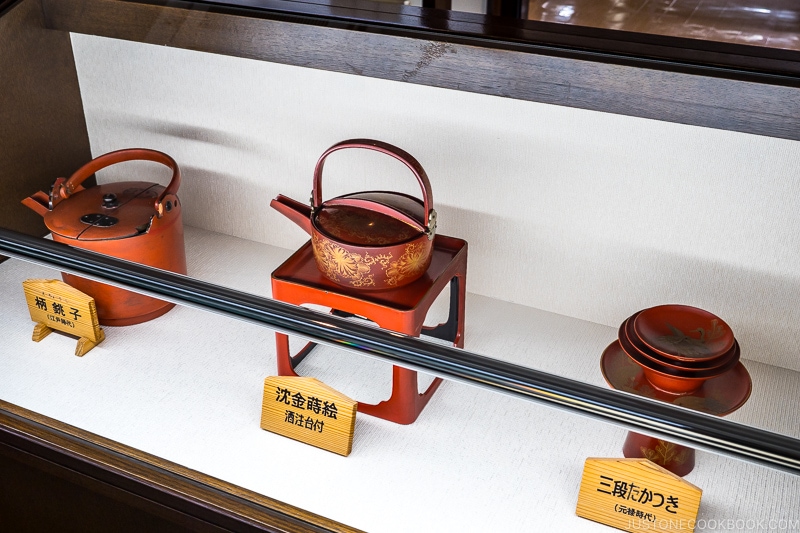
The first written record of sake production was in Engishiki (延喜式). This 10th-century book on law and customs noted sake-making methods, including ten different types of sake. Some of the basic brewing processes followed today were already in use. The most commonly brewed sake was thick and sweet, like mirin, as it was brewed in multiple stages.
Sake Outside the Imperial Court
The demand for sake eventually outgrew the supply produced within the Imperial court. Relatives of government officials began to brew sake outside the courts. Production spread to Shinto shrines, Buddhist temples, and newly established breweries. Furthermore, the flourishing of commerce and the adaptation of a monetary economy elevated sake as a valuable commodity, similar to rice. Sake production became wide-scale and more accessible to the commoners. It gradually became enjoyed as an everyday drink, not just reserved for special occasions.
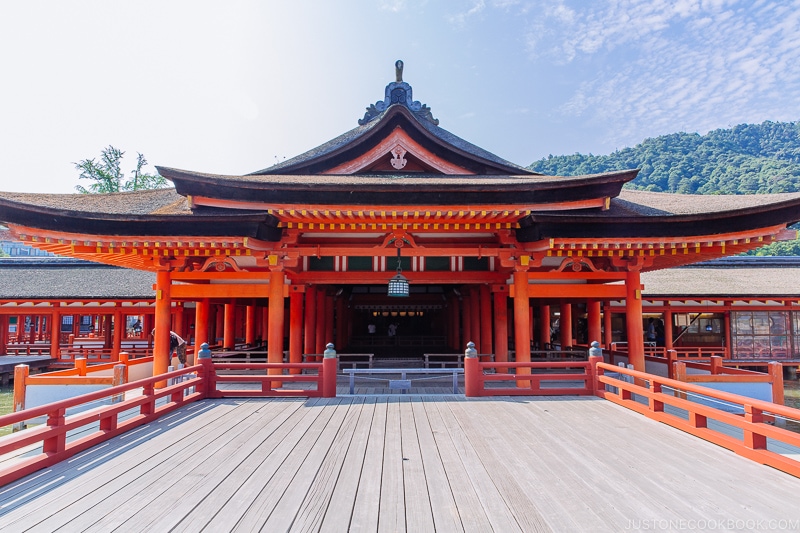
History of Japanese Sake Brewing Techniques
Today’s sake brewing techniques were developed and refined during the Muromachi era (1333-1573). Brewers started using lactic acid fermentation, making shubo (fermentation mash), and relying on lactic acid to inhibit microbial contamination.
Hitherto, brewers used polished rice to make koji and brown rice to make sake. During this period, they started producing sake made exclusively of polished rice for koji and steamed rice. This produced morohaku sake (諸白酒), a clear sake with a tint of yellow like mirin due to the rice bran.
While morohaku became mainstream, it didn’t replace the cloudy homebrewed sake called doburoku (濁酒). Farmers primarily brewed doburoku, which was a cheaper alternative than morohaku sake.
The monks of Kofuku temple recorded further improvements in the Tamon’in Diary (多聞院日記). This diary on temple life noted the practice of polishing rice instead of using unmilled grains, a simplified form of pasteurization, filtering the sake through charcoal, and more. These methods were passed on until the Edo period.
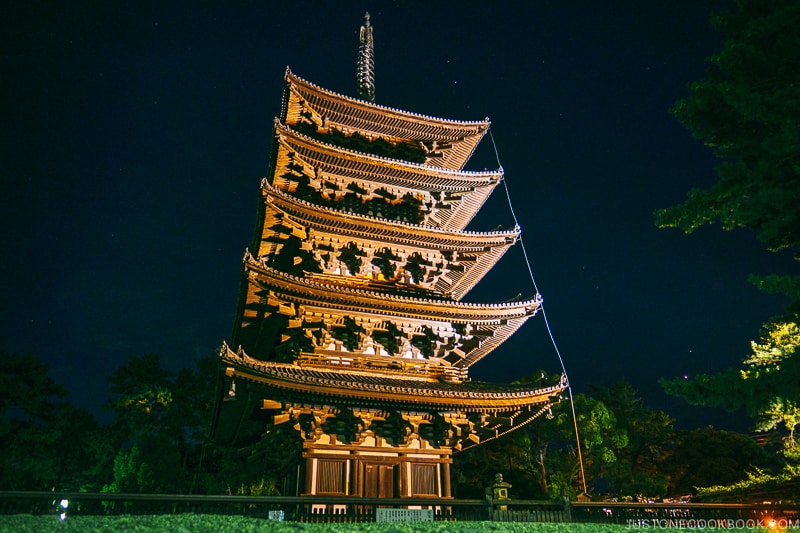
In addition, innovations in carpentry skills enabled the construction of giant wooden vats. These massive 1,500-liter vats allowed breweries to produce sake in large quantities. These innovations led to the full-fledged sake production by specialists not affiliated with religious institutions in the 16th century.
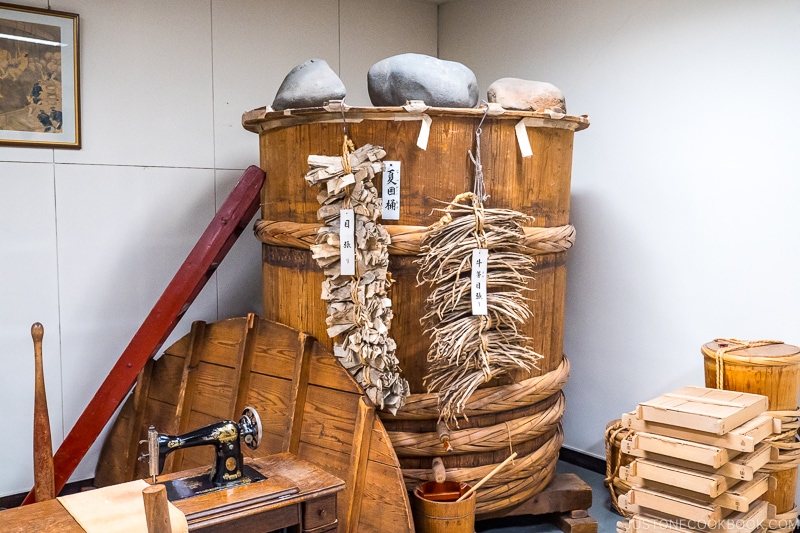
Taxation on the Breweries
As the sake industry flourished and sake breweries gained economic power, the Muromachi shogunate implemented a tax on sake. As breweries were among the wealthiest merchants of the time, the government used this income as a source of revenue. The Muromachi era was a time of civil wars, so this income provided financial support.
Therefore, the growth of the sake industry was crucial for maintaining the government’s political dominance as it dealt with samurai and peasant uprisings.
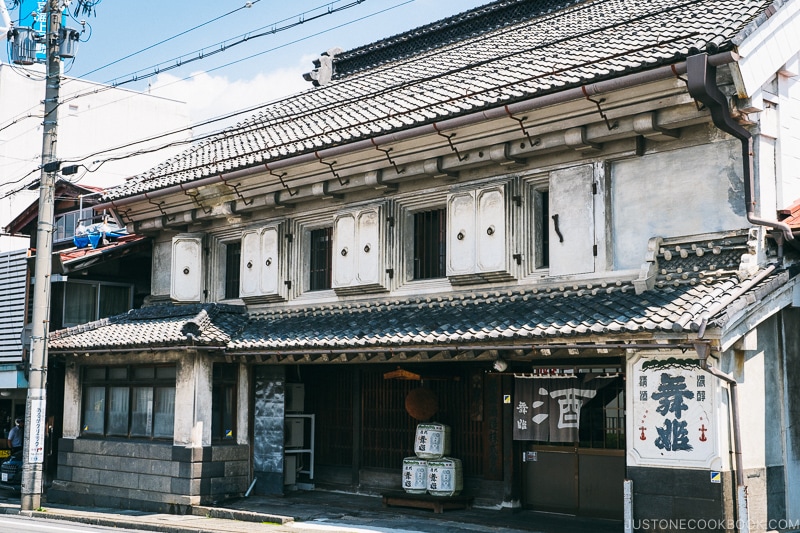
Commercialization of Sake Production
With the almost exponential growth of the sake industry, breweries opened up outside of Kyoto. These breweries transported their sake for the Kyoto people. But breweries in Kyoto disapproved of this and nicknamed the non-Kyoto sake “yosozake” (他所酒 – sake brewed outside of Kyoto) or “nukezake” (抜け酒 – sake that slipped through the law). Worried that consumers would lean towards the cheaper competition, they petitioned for the local government to halt the sales and consumption of yosozake.
However, their attempts failed to stop the flow of yosozake and instead triggered the boom of jizake (地酒 local sake).
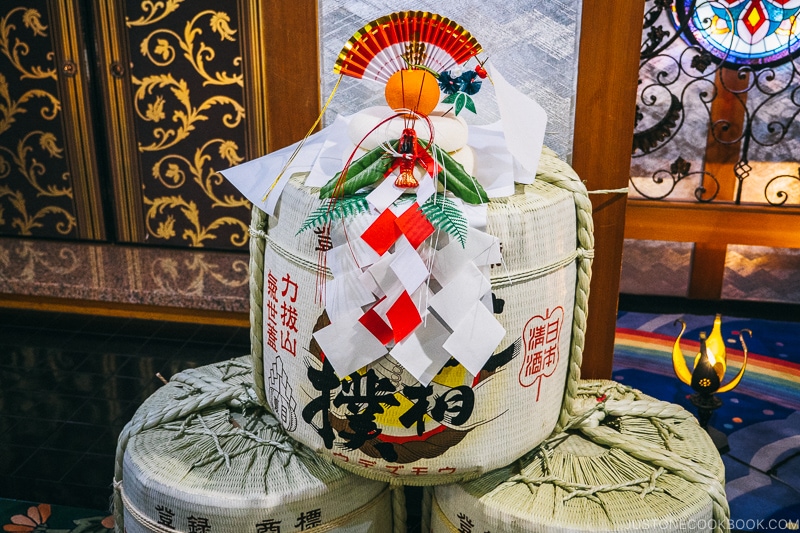
Located some 285 miles/460km away, the Edo shogunate (1603-1868) also caught the jizake boom. The Shogunate even designated a sake from Hyogo prefecture (west of Kyoto). Most of this high-quality Itamizake (伊丹酒) was transported to the Edo capital, becoming a rarity in Kyoto. Ironically, some Kyoto breweries deceived the Kyoto people by mislabeling their sake as Itamizake.
Improvements and Refinements of Sake
Sake production has always been centered in western Japan. During the Edo period, Hyogo prefecture was at the forefront of technological advancement and large-scale sake production. As mentioned in part 2, Hyogo prefecture boasts the most esteemed water for sake production.
There were several concerted improvements to produce sake on a more industrial scale with higher quality. Previously, brewers laboriously polished the rice by hand or foot treadles. The shift to waterwheels increased productivity and quality by increasing the milling.
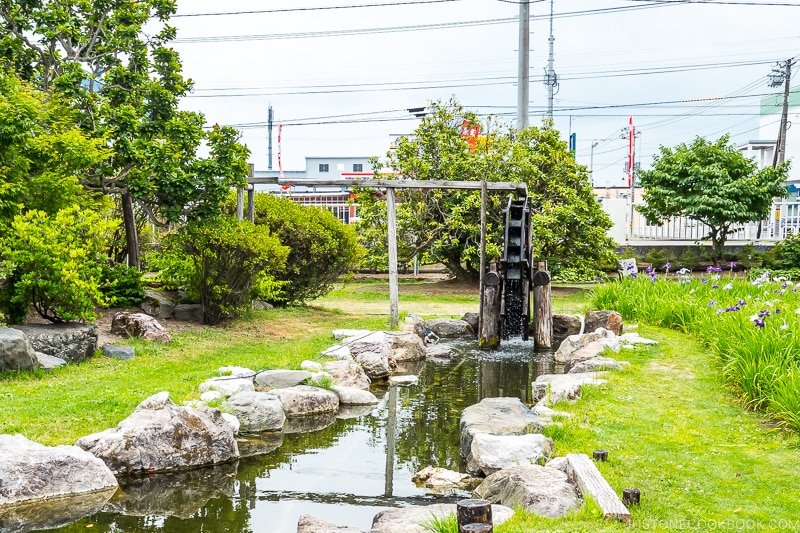
Craftsmen added improvements and refinement to reduce the risk of bacterial contamination and facilitate stable sake production. Techniques such as hi’ire (火入れ) heating the sake on low heat to boost shelf stability, kanzukuri (寒造り) concentrating the sake process during the winter, and hashira-shochu (柱焼酎) adding alcohol to prevent spoilage were developed. These methods boosted the taste, aroma, and purity of sake.
During the peaceful 400 years of the Edo era, sake evolved from a local business to a full-fledged industry. Sake enthusiasts sought rare sake producers, and breweries distinguished themselves with brands and trademarks. To manage the increased production of sake without affecting the price of rice, the government controlled the sake industry by adjusting the supply and price of rice.
Edokko and History of Japanese Sake
The Edo shogunate moved the nation’s capital from Kyoto to Edo (present-day Tokyo), which housed over a million residents at its peak. Most inhabitants were young bachelors seeking employment in the new city. This influx of these hungry and able men resulted in the flourishing of the dining culture. Many Japanese foods such as nigiri sushi, tempura, soba, and unagi originate in the Edo era.
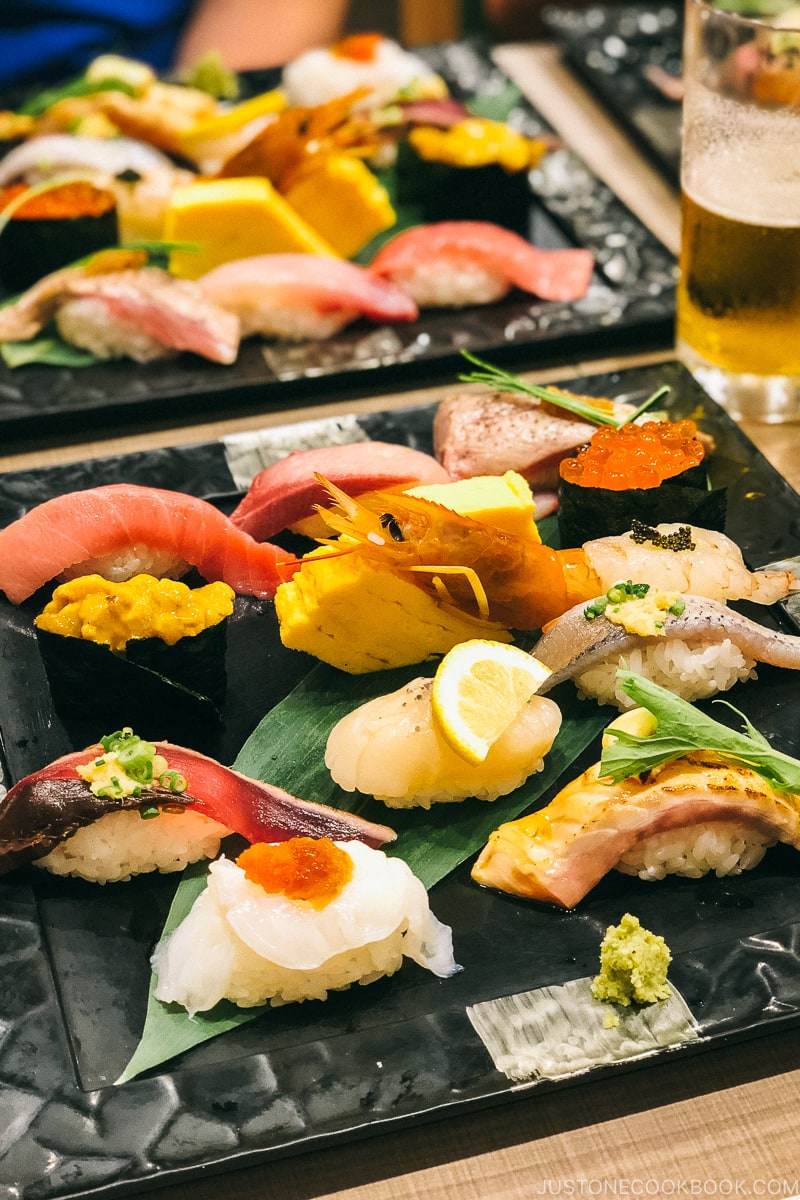
Copious amounts of sake flowed from all over the country, of which 90% were from Hyogo prefecture. Over 1,800 sake shops were scattered across the capital. Sake shipped from western Japan to Edo was called kudarizake (下り酒), as the sake was “coming down” to Edo. Low-quality sake deemed not suitable for Edo was called kudaranai (くだらない), literally “not coming down.” This term is still used today and refers to useless or worthless things.
Production of kudarizake reached 38,000 kiloliters at the beginning of the 18th century. This is equivalent to the annual per-capita consumption of 54 liters among the Edokko (an affectionate term for the Edo people). For context, this consumption is ten times higher than today.
Records show that Edo-era sake was heavy and sweet with a high viscosity. It was much higher in alcohol due to adding alcohol, making it resistant to spoilage.
Large amounts of sake were packed in casks and transported by sailboat. Vessels transporting sake raced to see which could enter Edo port the quickest. Reportedly, the journey from Kobe to Edo took just three to four days, compared to the usual 10 to 30 days.
The Establishment of a Government-backed Research Institute
A successful brew was largely dependent on the brewmaster’s technical skills. However, it could easily be contaminated due to weather conditions, brewing environment, and other unforeseen circumstances. Thus, throughout the history of Japanese sake, the quality was not always stable.
The Meiji government (1868 – 1912) viewed safe brewing as a part of national strategy and modernized the brewery industry. It established The National Research Institute of Brewing (酒類総合研究所), which contributed significantly to improvements to brewing technology based on Western science.
Some improvements include the shift from cedar vats to enamel-coated steel tanks, deemed more hygienic. They could be sterilized, were durable, and lasted much longer than wooden barrels. The institution also studied fermentation science and introduced machinery to streamline the process. It also isolated fermentation yeast, a significant development as natural yeast is unstable and susceptible to contamination. It also held the first sake competition, bringing breweries across Japan to compete and learn from each other.
This agency still exists today, although it yields much less influence on the sake industry than in its heyday.
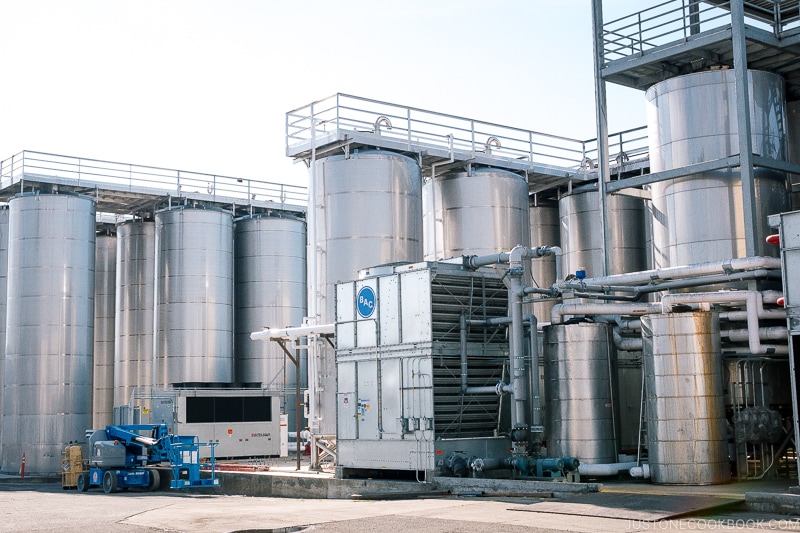
Heavy Taxation and Regulations on the Sake Industry
Like the Muromachi shogunate, the government taxed sake for revenue. During the Meiji period, the government saw the tax income as a means of building its military strength. The government did not initially impose a tax on beer and wine to encourage people to consume Western liquors as part of the government’s Westernization agenda. Some say this was one reason for the rapid diffusion of beer among the Japanese.
A new sake law permitted anyone to brew sake to open breweries with the resources and ability. Within a year, over 30,000 new breweries opened nationwide; however, over two-thirds shut down due to increasing taxation on sake producers.
Wealthy landowners saw the business opportunity and built breweries on their premises. It was common for landowners to stock up on rice in preparation for poor harvests or famine. However, these stockpiles were not always consumed and would spoil. So rather than letting it go to waste, they would send the surplus to their breweries to make sake.
Many of the breweries still in existence today were set up by these wealthy landowners. Many former prime ministers and high-ranked politicians were from these wealthy brewery families.
Legacy of the Sake Tax Today
One of the sake taxes and laws still implemented today is the ban on home brewing. Around this time, commercial sake accounted for about 30% of domestic tax revenue. The government banned homebrewing as it could not be taxed. This law also prohibited the popular homebrewed Doburoku (濁酒), which has mostly disappeared from the sake scene. However, some breweries and religious institutions brew it today for special occasions.
This law on home brewing is still in effect, even though alcohol tax makes up less than 3% of revenue. To note, you can make homemade alcohols such as umeshu as long as you use distilled alcohol over 20%. However, the law bans making umeshu with sake, mirin, or alcohol under 20%. It is illegal to homebrew over 1% alcohol by volume, and you may be fined up to 1 million yen if caught.
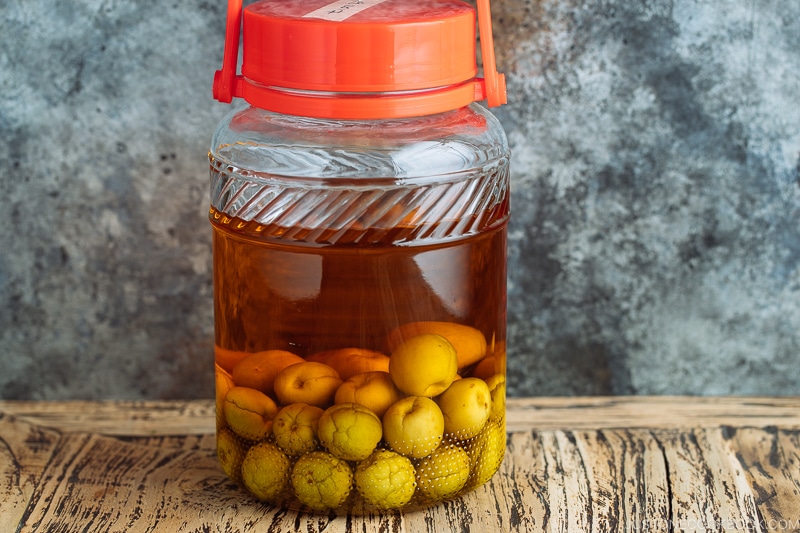
History of Japanese Sake – Pre/post-war period
Due to rice shortages, the government restricted sake production during World War II. Brewers added cheap distilled alcohol and glucose to the rice mash to meet consumer demands, increasing yields by four times. Called sanzoshu (三増酒), it was sticky and cloyingly sweet. While this fortified sake did not taste like actual sake, it allowed breweries to survive the tough times.
The economic democratization eased rice restrictions in 1949. The mechanization of sake production led to considerable increases in the quality of sake. Improvements in sake production made it possible to brew sake all year instead of just the winter season. These improvements led to a further flourishing of sake across Japan.
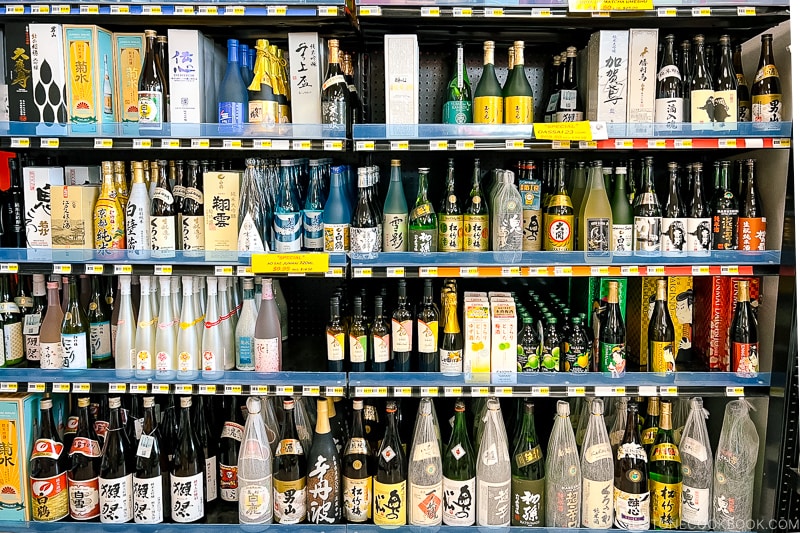
In the 1970s, local sake popularized high-quality locally consumed sake. Thanks to extensive marketing campaigns by the railway industry, consumers were excited with the vast selection beyond the big brands.
They eagerly drank sake from all over Japan and sought small-batch premium sake called maboroshi-no-sake (幻の酒 “phantom sake”). This jizake boom allowed small-scale artisanal breweries to develop new sake rice, yeast, and styles. As a result, people started to appreciate sake from other lesser-known regions, focusing on quality over quantity. One such result was the birth of light and fragrant ginjo, which enjoyed widespread popularity.
Sake in the 21st century and beyond
With the popularity of Japanese food abroad, how will the sake industry adapt in this modern age?
First, experts agree that the quality of sake is the highest it has ever been. There is a vast range of styles, varieties, and prices, from micro-artisanal breweries to big national brands. Some breweries have gone back to the traditional labor-intensive brewing methods. In contrast, others installed high-tech machinery to optimize their production. Some are experimenting with local, less-known rice instead of the popular strains. There’s low-calorie, low-alcohol, and even non-alcoholic sake. Suffice to say, there is lots of buzz around artisanal brewers.
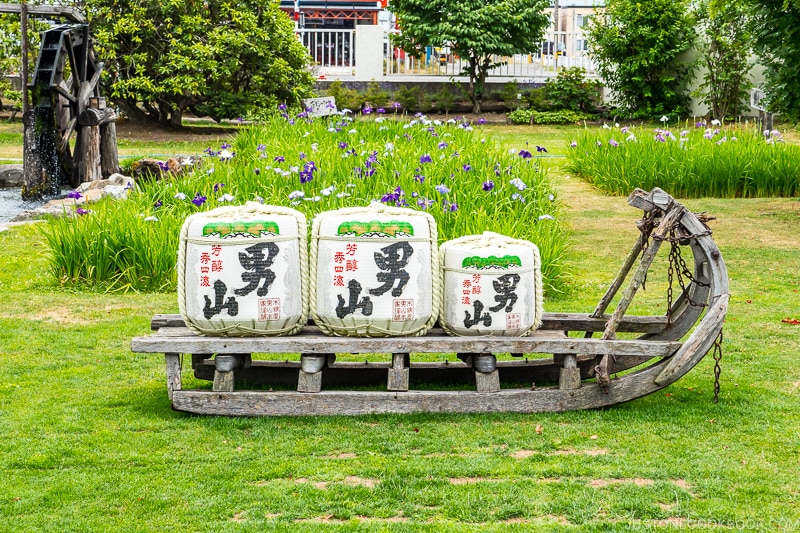
Secondly, there have been changes within the sake industry. Women are entering the once male-dominated sake breweries and rising the ranks to become master brewers. Breweries are also hiring non-Japanese employees keen to learn and master sake brewing. The once-hierarchical breweries are shifting their work culture to adapt to modern times.
Sake Consumption Growing Outside of Japan
Lastly, many sake breweries have focused on the growing overseas market. From international sake competitions and events, non-Japanese sake specialists and sommeliers are spreading the love of sake far and wide. The popularity of Japanese restaurants and food culture has helped connect consumers to different types of sake. Breweries are springing up in the U.S., China, Australia, and Southeast Asia, experimenting with the local climate and conditions.
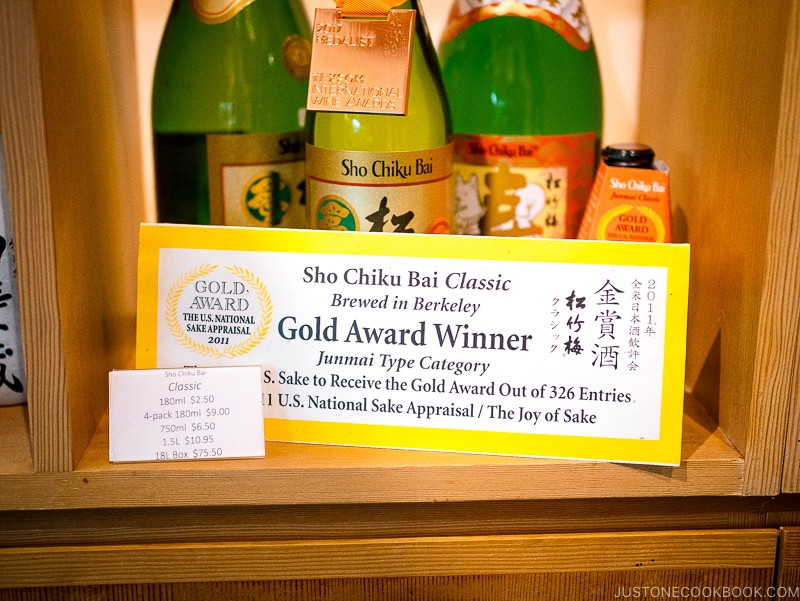
However, domestic sake sales are dwindling. The number of breweries has drastically declined from 2,500 in 1998 to 1,400 in 2006. The Japanese drink half the amount of sake they did in the 1970s. Sake only has a 9 percent share of the alcoholic drink market in Japan, down from 17 percent in 1989. Japan’s declining birthrate is also shrinking the pool of potential sake drinkers.
While international sales are rising, relying on exports alone may not help breweries survive in this age. Sake brewers undoubtedly face new challenges as they find ways to adapt and thrive to the needs of 21st-century consumers.
Learn about the Japanese Sake
- Sake Guide for Beginners
- How to Enjoy Sake (Food Pairings Included)
- A Detailed History of Japanese Sake
- The Japanese Sake Culture – An In-Depth Guide
Sources:










I am enjoying the history of various Japanese foods and beverages and appreciate the information in these articles. Thank you so much for all of the research you have done and for the articles. It adds to the appreciation of Japanese cooking.
Hi Annie, thank you for reading! Please stay tuned for more in-depth food culture topics!
Thank you so much for all these information on Sake. I have been trying to get more information on the types of sake that I can start drinking. I got interested in sake when I visited Japan for my friend’s son wedding in Tokyo and they served simply wonderfully smooth sake for their wedding
Hi Jamie! Thanks for reading and glad this post was helpful for you!